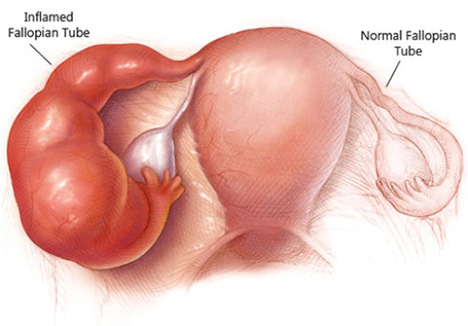Hydrosalpinx Doctor in Dubai
Hydrosalpinx
The term hydrosalpinx is used to refer to fluid-filled fallopian tubes that result from distal tubal blockage. A hydrosalpinx can cause abdominal pain or unusual vaginal discharge, but it’s not uncommon for women to be completely unaware they have the condition until it is discovered during fertility investigations.
During ovulation, the ovary releases the egg which travels down to the fallopian tube to the uterus where it can be fertilized. If the tubes are blocked, then it is difficult or impossible for the egg to make that journey, leading to impaired fertility.

What are the risk factors for Hydrosalpinx?
It is more common in women who have experienced:
- Endometriosis
- Sexually Transmitted Disease (STD)
- Pelvic Inflammatory Disease (PID)
- Abdominal and/or Pelvic Surgery
How is the diagnosis of Hydrosalpinx done?
Hydrosalpinxis often diagnosed during investigations into female fertility concerns. Different ways in which a diagnosis can be reached are:
- Ultrasound – Regular ultrasounds don’t always pick up hydrosalpinx.
- Hysterosalpingogram (HSG) – This procedure involves introducing dye through the cervix to highlight the uterine cavity and fallopian tube anatomy and then taking a series of x-rays.
- Laparoscopy – A diagnostic laparoscopy allows your doctor to perform a direct visual check for hydrosalpinx, along with other conditions which may be impacting female fertility such as endometriosis or PCOS.
What are the symptoms of hydrosalpinx?
Some women do not experience any symptoms. Some possible symptoms of hydrosalpinx include:
- abdominal and pelvic pain
- unusual vaginal discharge
- infertility
How is hydrosalpinx treated?
Hydrosalpinx is often treated by having surgery to remove the affected tube(s). Surgery may also be offered to remove scar tissue or other adhesions that could be affecting fertility.
If Pelvic Inflammatory Disease is known to be the cause, the doctor may first prescribe a course of antibiotics prior to any surgical intervention.
The most common fertility treatment used for those with hydrosalpinx looking to expand their family is in vitro fertilization (IVF). In Vitro Fertilization removes eggs from the woman’s ovaries, fertilizes them with sperm in a laboratory, and grows them for a few days prior to transferring them back into the woman’s uterus thereby bypassing the woman’s tubes altogether.
However, some studies indicate hydrosalpinx decreases conception by about 50% and also increases miscarriage when undergoing IVF. Therefore, your doctor may recommend that your tubes (with hydrosalpinx) be removed through laparoscopic surgery prior to undergoing IVF. Women who have one hydrosalpinx and one open tube can also benefit from removing the hydrosalpinx and will increase their chances of conceiving on their own or with subsequent fertility treatments.

